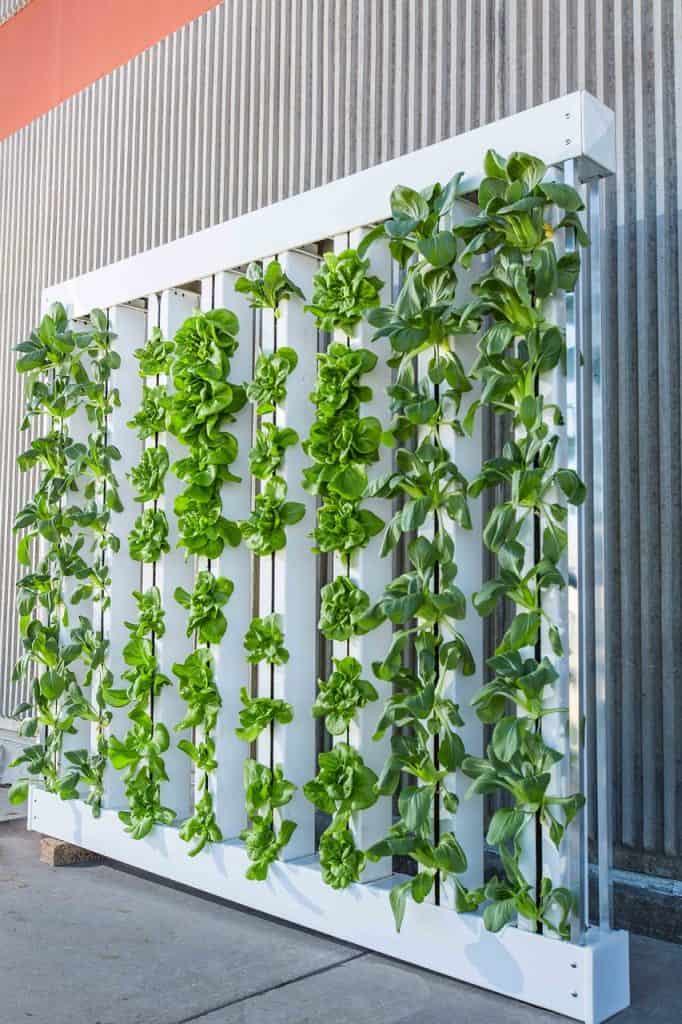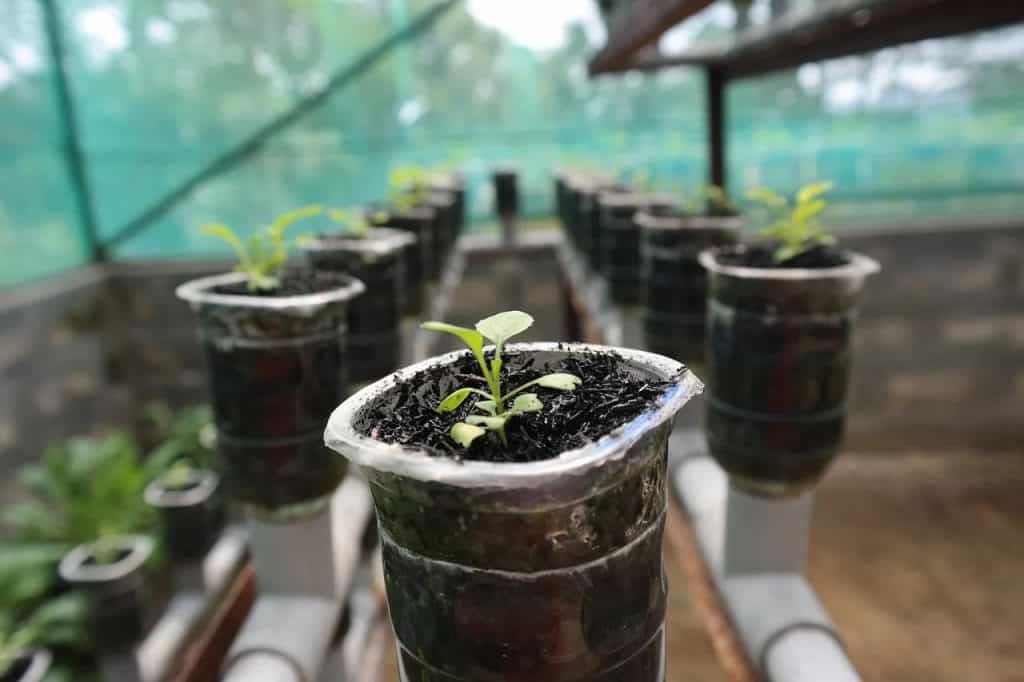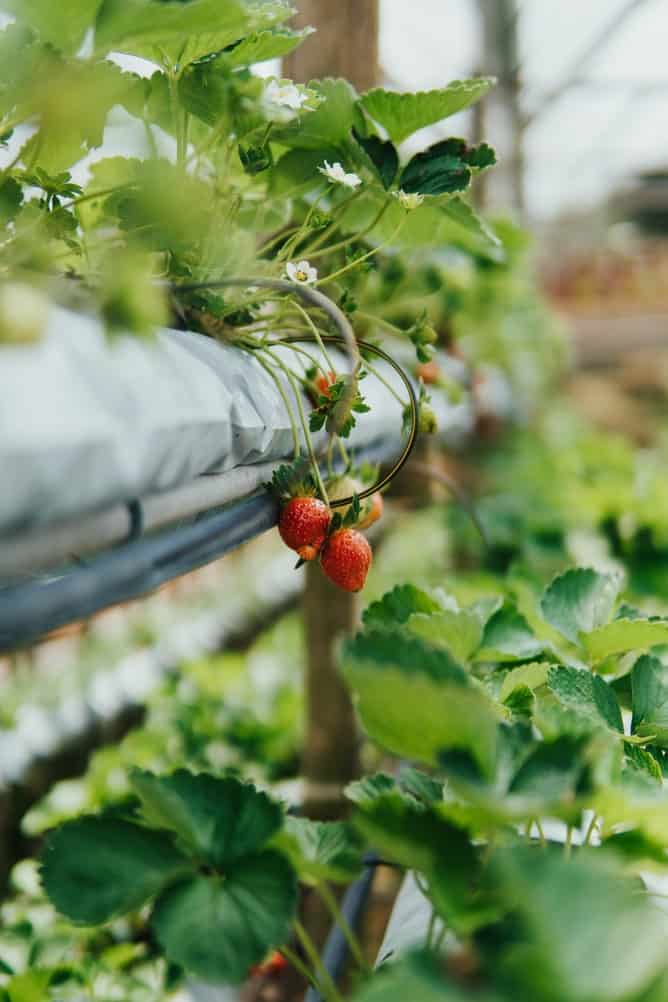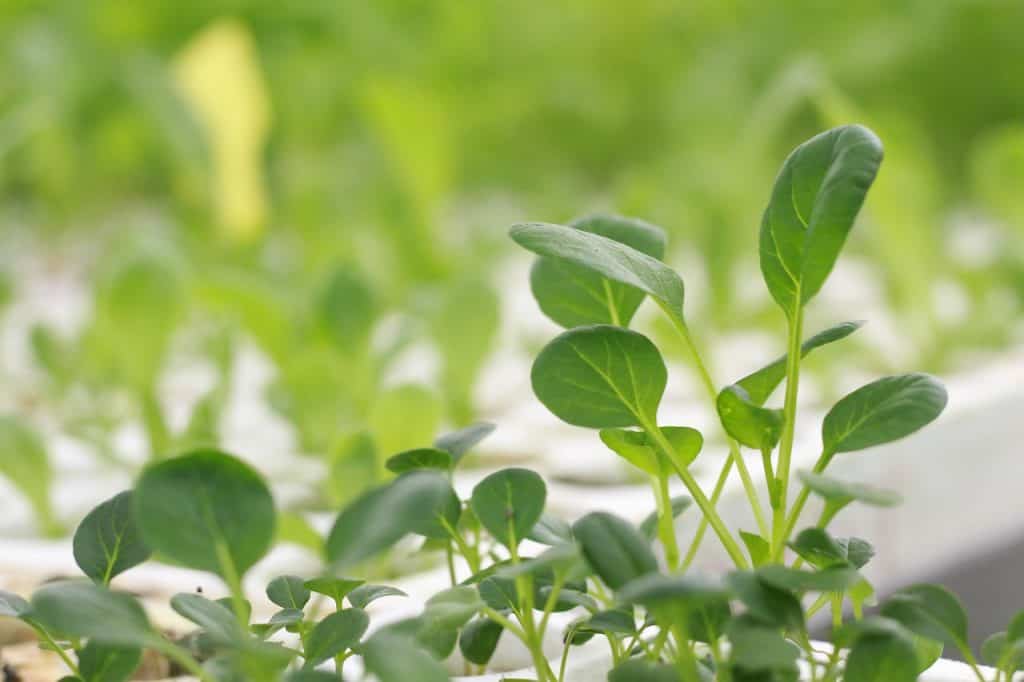Flower Glossary is reader-supported. When you buy through links on our site, we may earn an affiliate commission.
Vertical farming is an up and coming solution focused on using space and resources efficiently. Below we’ll explore some of the different types of vertical farming solutions available.
Table of Contents
What is Vertical Farming?

The practice of utilizing limited space and resources for planting is called implementing a vertical farming system. The system puts plants into an environment that works with their agriculture and optimizes growth. It’s a way of harvesting crops on shelves or towers positioned vertically rather than the traditional, old-fashioned horizontal farming.
Farmers that use this method can grow an exponentially higher amount of food with the same amount of land because of improved space utilization. Vertical farming can be more difficult to implement since it requires more control for temperature, humidity, and light to be successful. It takes even more determination, discipline, and hard work for farmers!
The way vertical farming works is that crops are cultivated in a stacked tower or shelve structure with scalable technology. Plants are placed into cups or containers to save space. There are many different types of vertical farming systems that farmers can integrate to provide the best harvest.
Different Types of Vertical Farming Systems
Hydroponics
This technique for vertical farming suggests growing plants without the need for soil. Hydroponic systems submerge plant roots into liquid solutions with different nutrients. Instead of using soil, materials such as gravel and sand are used as substitutes for supporting the plants’ roots. This allows macronutrients, or the nutrients required in large amounts, to be taken and focused on by plants.
Advantages of hydroponic farming include increasing the production of crops in an area and decreasing the amount of water used for the plants overall.

Aquaponics
Aquaponics combines aquaculture and hydroponics. Aquaculture refers to using fish farming, and hydroponics is planting without soil. Aquaponics takes hydroponics to the next level by integrating earthly plants’ production while using aquatic organisms to help their growth.
In a closed-loop system (or a system that sustains itself without outside organisms), the plants’ environment will mimic their natural habitat. Combining natural aquatic organisms without the use of soil helps the plants focus on the intake of natural materials and nutrients.
The main focus of aquaponics is to produce more slower-growing crops while including some more aquatic organisms. Since this still utilizes nutrients and vertical farming, but at a reduced rate, it isn’t used as often as other methods of vertical farming.

Aeroponics
This system type was utilized best by NASA to find an efficient way of producing crops in unconventional circumstances. NASA mainly sought out this technique to see how easy it was to grow plants in space in the 1990s. Aeroponics is unique because it uses no soil or aquatic organisms to grow.
Instead, the absence of a growing medium helps save energy for the farming technique and plants. As gravity automatically drains excess liquid, this technique is specific to use in space.
As aeroponics is not a typical method, it is not used as widely. However, it has started to gain more traction with the rise of vertical farming and its efficiency.

Conclusion
As the world trends towards being more efficient, people are adopting new ways to speed up their trades’ quality and speed. Farming has started to turn away from the typical horizontal farming and creating more crops with less space with vertical farming.
Some methods are proven, and some are still being worked on; however, the more techniques are discovered, the more efficient farming will become. In turn, this will help utilize space, save resources, grow successful crops, and ultimately increase efficiency all around.